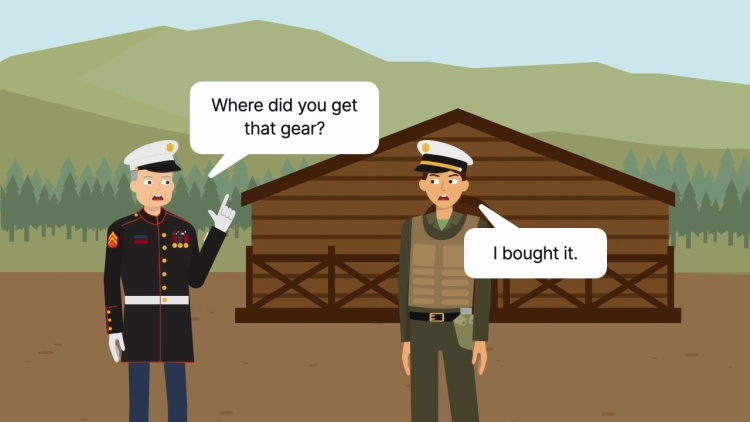United States v. Coffman
United States Navy-Marine Corps Court of Criminal Appeals
62 M.J. 676 (2006)
- Written by Jamie Milne, JD
Facts
While Coffmann (defendant) was stationed in Iraq, he and several others were instructed to clear out a room to prepare for the arrival of a new platoon. The group was instructed to trash the boxes stored inside. During the clear-out process, Coffmann came across an open box that contained special-operations equipment (the gear), including a force vest, duty belt, and canteen covers, which had a total value exceeding $500. Coffmann attempted to determine the owner of the gear but was unsuccessful. Coffmann then used the gear himself while on patrols. After about a month, Coffmann’s section leader confronted him about the gear’s ownership. Coffmann responded that he had purchased the gear. Coffmann eventually pled guilty to making a false official statement and larceny under the Uniform Code of Military Justice, 10 U.S.C. §§ 907, 921. During the entry of the pleas, Coffmann admitted to the military judge that he knew it was wrong to take the gear, he intended to deprive the owner of the gear, and he would have continued to use the gear if he had not been confronted. Without explaining the relevant legal terms and standards, the military judge asked Coffmann if he believed the gear had been abandoned. Coffmann responded no. Although the case was referred to the United States Navy-Marine Corps Court of Criminal Appeals without assignment of error, the court chose to specify an issue to counsel regarding whether Coffmann’s guilty plea to larceny was provident, or properly granted. Coffmann now contends that the larceny plea was improvident, because the military judge did not further inquire into the defense of mistake of fact in connection with whether the gear was abandoned.
Rule of Law
Issue
Holding and Reasoning (Dorman, C.J.)
What to do next…
Here's why 899,000 law students have relied on our case briefs:
- Written by law professors and practitioners, not other law students. 47,000 briefs, keyed to 994 casebooks. Top-notch customer support.
- The right amount of information, includes the facts, issues, rule of law, holding and reasoning, and any concurrences and dissents.
- Access in your classes, works on your mobile and tablet. Massive library of related video lessons and high quality multiple-choice questions.
- Easy to use, uniform format for every case brief. Written in plain English, not in legalese. Our briefs summarize and simplify; they don’t just repeat the court’s language.







